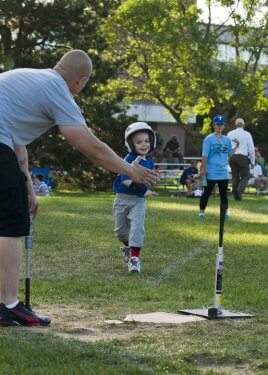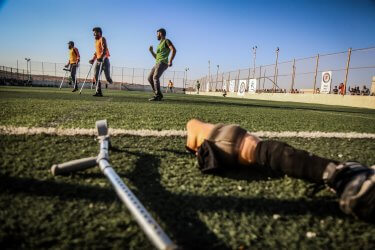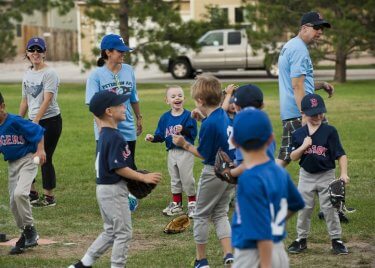Limited opportunities exist for athletes with physical disabilities to participate in sport (Martin, 2018), specifically, no foundation presently exists for creating generations of athletes with physical disabilities (Shaw & Stoll, 2018). Many students and children with physical disabilities are excluded from institutional sport, recreation, and physical education where they can learn the fundamentals of a healthy active lifestyle.

A concomitant problem arises, as this population of youth is growing up without the fundamental knowledge of how to be active. However, what if there was a better way to provide individuals with physical disabilities the knowledge and skills for a healthy active lifestyle? The purpose of this paper examines an argument to include students and athletes with physical disabilities in sport, recreation, and physical education beyond the minimum requirements by law.
Historical Background
The problem of inclusion is not historically modern since people with physical disabilities were excluded from every aspect of life. They were left to die on the streets, were killed at birth, or were hidden away (Rimmerman, 2013). Often the brutish societal behavior was collaborated through early laws. From the inception of the law, i.e., Mosaic Law, Roman law, Hammurabi’s code, and Hebraic rule, individual rights were seldom addressed. Instead, what was good for the masses ruled, and thus the minority, that is people with disabilities, were excluded or eliminated.

The notion of the majority rules is the essential nature of the problem with exclusion today, even though there are three specific laws in the United States to include individuals with disabilities. (i.e. The Rehabilitation Act of 1973, Americans with Disabilities Act (ADA) of 1990, and the Individuals with Disabilities Education Act of 2004). These laws are in place to prohibit discrimination and offer equal opportunity in education for people with disabilities. However, when applied, the concern for the majority (i.e. the able-bodied), negatively affects how inclusion is rendered.
The intention of the present laws appears to consider the individual, however, the reality is not the case. Federal laws are interpreted by each and every agency within the confines of each separate state. As such, agencies, teachers, re-creators, and coaches, rely heavily on the legal interpretation within the organization that oversees policy and procedures. The process is usually a lawyer analyzing the law, interpreting how it is to be incorporated, and offering an opinion of what should occur. The decision of inclusion is thus rendered by legal as to whether a child can play or not play.

This common practice has moral considerations since the result usually only meets the minimum requirement of the law. The minimum is the least expectation, not the best expectation and minimum requirements usually result in exclusion. For example, an organization following the minimum requirement of the law would state that if the inclusion of a student with a physical disability fundamentally changes the game, then the student should not be included. Thus, to meet the legal minimum of inclusion, the organization places the student with the disability in an ancillary activity adjacent to the play of the able-bodied students. The student with the disability, in a wheelchair, is pushed around the gym while the other students play a game of soccer. Other practices for minimal inclusion is designating a student with a physical disability as a ball girl (retrieving the ball so the able-bodied and can play) or being given the task of scorekeeper.
Moral Duty Versus The Minimal Standard
Individuals who are coaching, teaching, and leading should recognize that a moral obligation exists beyond legal interpretation to provide a positive opportunity when these individuals want to participate in sport, recreation, and physical education. A moral obligation “…implies that one “should” and even “must” follow principles based on moral values” beyond the law. (Lumpkin, Stoll, & Beller, 2003, p. 268). Moral duty can be answered through three questions of right choice: Is it good? Is it fair? And is it true?

Is It Good?
In moral parlance, good refers to the moral good –not the social good. The moral good refers to how we treat individuals. Do we respect them as human beings? The moral good of inclusion rests on actually including individuals with disabilities in the sport activity. Rules are not sacred and do not have moral good – a game is a game and nothing more. The rules of the game should not be more important than the people who play the game. Simply adapt the rules to include everyone.
A counter-argument might be that individuals are excluded because of the possibility of injury. However, the possibility of a student with a disability getting injured should not outweigh the benefits of inclusion. We must remember that every game has risks and as a player one accepts the risk to play. The rules should be adapted to include all the participants.
Is It Fair?
Justice is defined by Lumpkin, Stoll, and Beller (2003), as “…a universal moral value in which the essential nature of fairness and equity should be applied to all people. Justice in sport refers to making a level playing field either in constituting the rules of past inadequacies, social injustices, or physical or mental handicaps” (p. 267). If one does not offer positive opportunities for athletes with physical impairments, then they will be excluded and justice will not be fulfilled, because they do not have a chance to play. However, if the coach, teacher, and leader is creative they can create an environment where all students of every ability have a chance to play and be included.

Is It True?
Honesty is defined as, “…trustworthiness in which an individual can be depended on to not lie, cheat, or steal” (Lumpkin, Stoll, & Beller, 2003, p. 267). One needs to consider: are we really being honest when we do not give the same opportunities to people with physical disabilities that we would want for ourselves? If we want an opportunity to participate then we must be honest when examining the same question for a different population. Are we being honest, if the organization only meets the minimal requirements? Are we being fair, if the agency only meets the minimal requirement? Is it good, if the school only meets the minimal requirement? And for whom is the interpretation benefiting?
Creating Positive Opportunities
Inclusionary practices demand involvement – being a ball boy/girl is not inclusion. One can modify the activity by handicapping everyone, so each individual is treated as if no one has limitations. For example, using a whiffle ball and plastic bat to play baseball or playing inside instead of outside for youth who are in wheelchairs. To accomplish this, the leader (i.e. teacher, coach, supervisor, etc.) should communicate before the activity with both the able-bodied youth and the youth with the physical disability, to discuss the goal of the activity. If there is no communication, then how will the student have a positive experience?

We Can Do Better
We, the authors, presented this paper in Toronto, Canada, at the 10th International Conference on Sport and Society. We discovered that providing positive experiences and opportunities for athletes with physical disabilities is not limited to the United States. Ms. Shaw shared her own life experience of being an athlete with a physical impairment and her positive experiences of being in a system where the sporting experience was valued for all. Other participants shared experiences noting the same legalistic interpretation of focusing on the majority. For example, athletes who participate in the Para-Olympics shared that their own countries do not provide enough opportunities to participate in sport. Children in Germany who are able-bodied are encouraged to go to sporting camps and participate – however, children with physical disabilities who would like to do the same cannot because there are no opportunities. If re-creators, coaches and teachers are passionate about including all youth, regardless of their physical capabilities, they will be able to create positive experiences for everyone. The law is only the minimum – we can do better.
References
Lumpkin, A., Stoll, S. K., & Beller, J. M. (2003). Sport ethics: Application for fair play (third ed.). Boston, MA: McGraw-Hill.
Martin, J. (2018). Handbook of disability sport and exercise psychology. New York: Oxford.
Rimmerman, A. (2013). Social inclusion of people with disabilities: National and international perspective. New York: Cambridge University Press.
Shaw, A. H., & Stoll, S. K. (2018, Mar.- Apr.). Making play a positive inclusive experience for differently-abled students, athletes, and patients with disabilities. The Journal of Sport Science, 6(2), 94-102.

Fantastic article and so very TRUE!! I can’t wait to share this!! Thank you for writing about what we all know to be true! We can do better!
Thank you for this well-written and insightful article!! I have shared it!! We need to continue to advocate for fair play for all abilities.